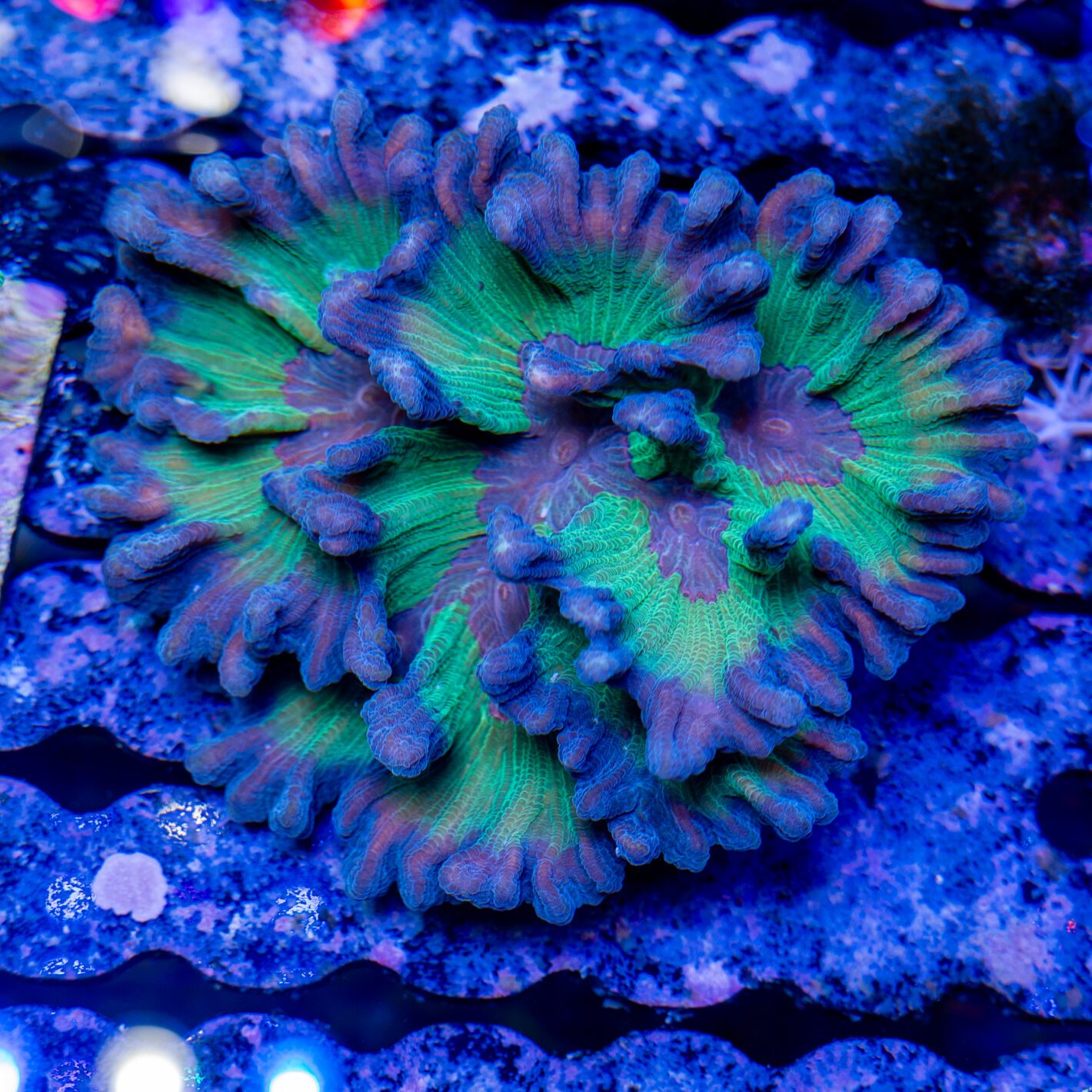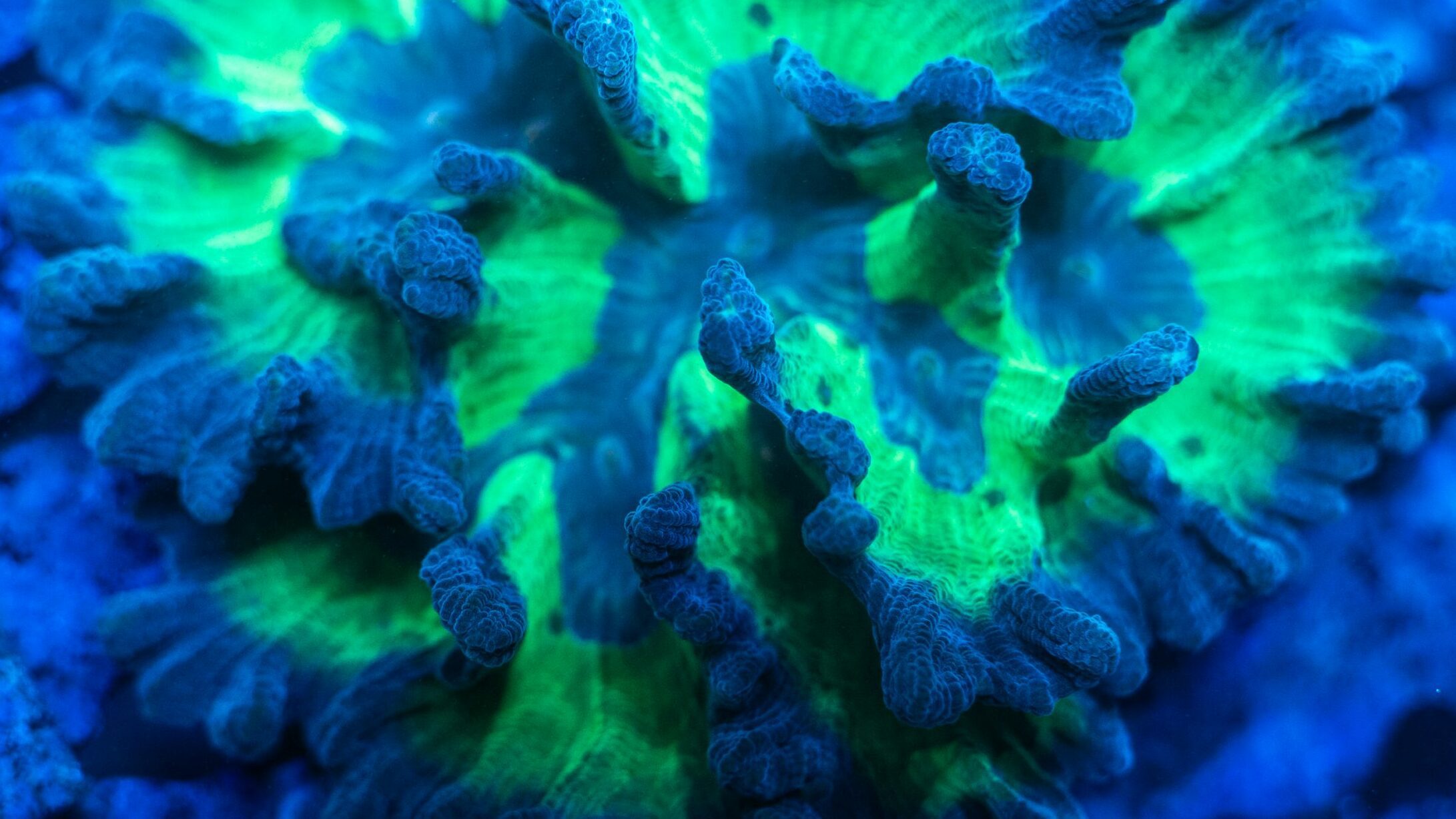
Pectinia is a fairly aggressive Large Polyped Stoney Coral. It is not a terribly nutrient sensitive coral, and it’s growth pattern is extremely unique. With Jagged, curved, teeth-like spires forming beautiful and dramatic “caverns” designed to catch swells of food, this coral will line the walls of these swells with mouths, and even grow greater density and size of mouths based on the food source available to it.
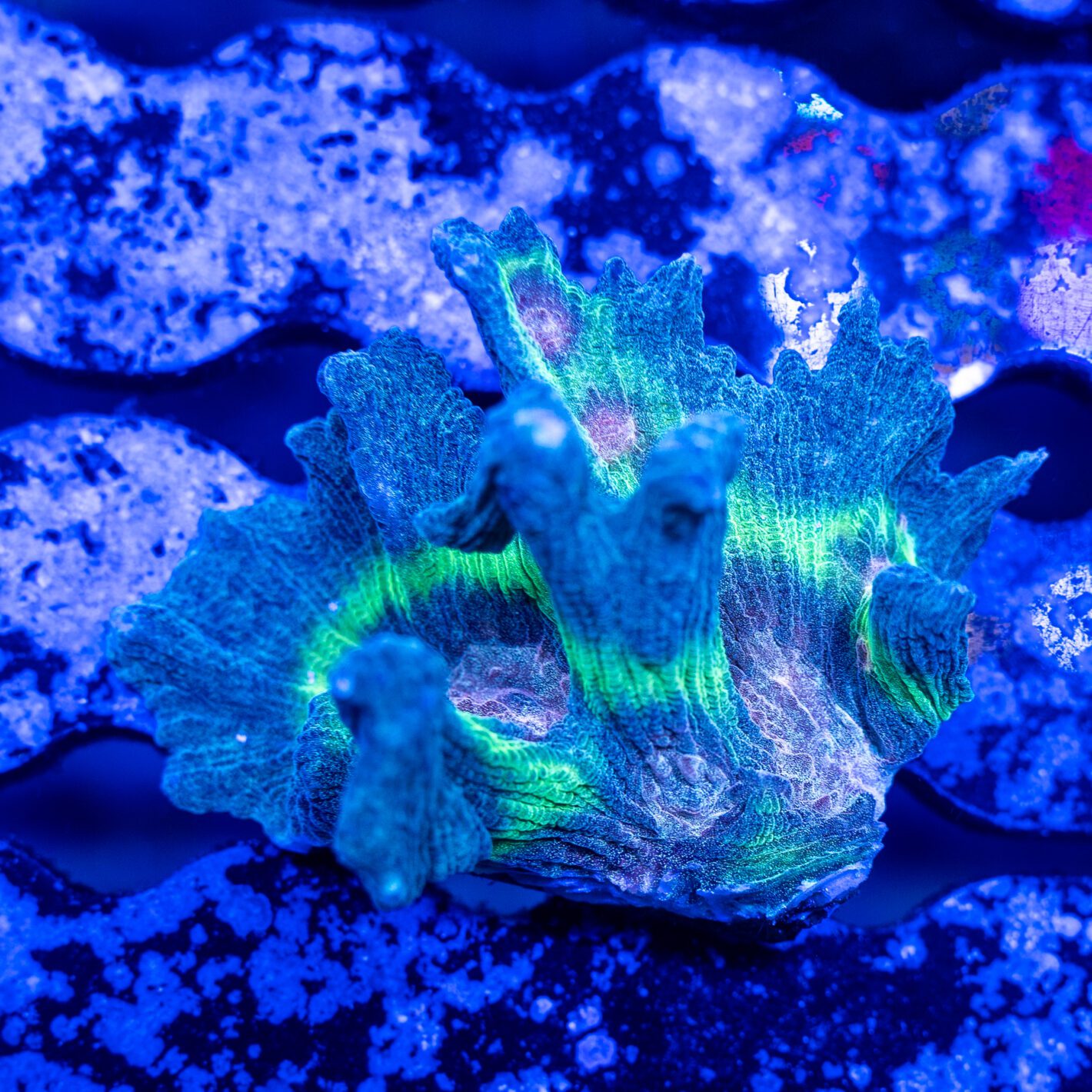
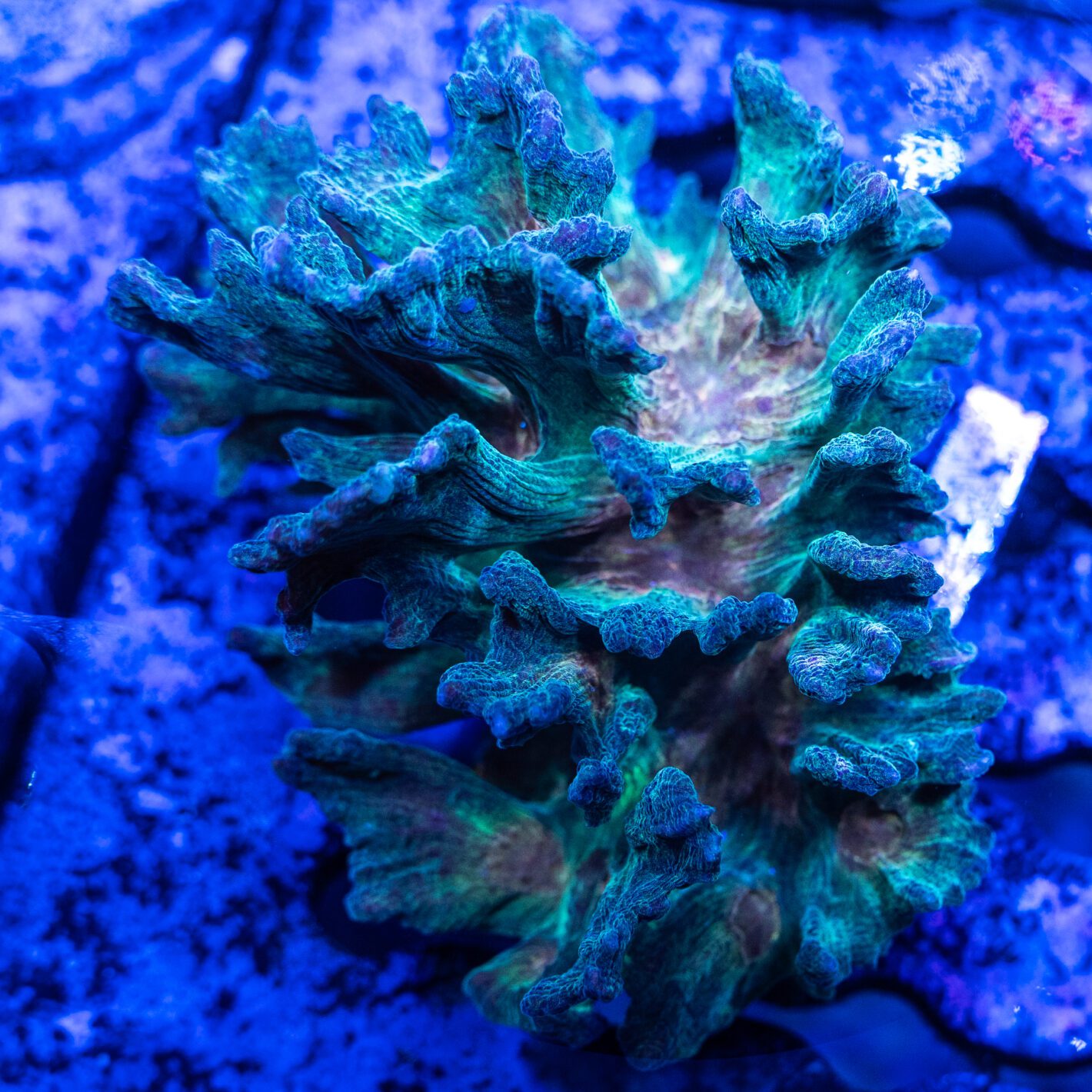
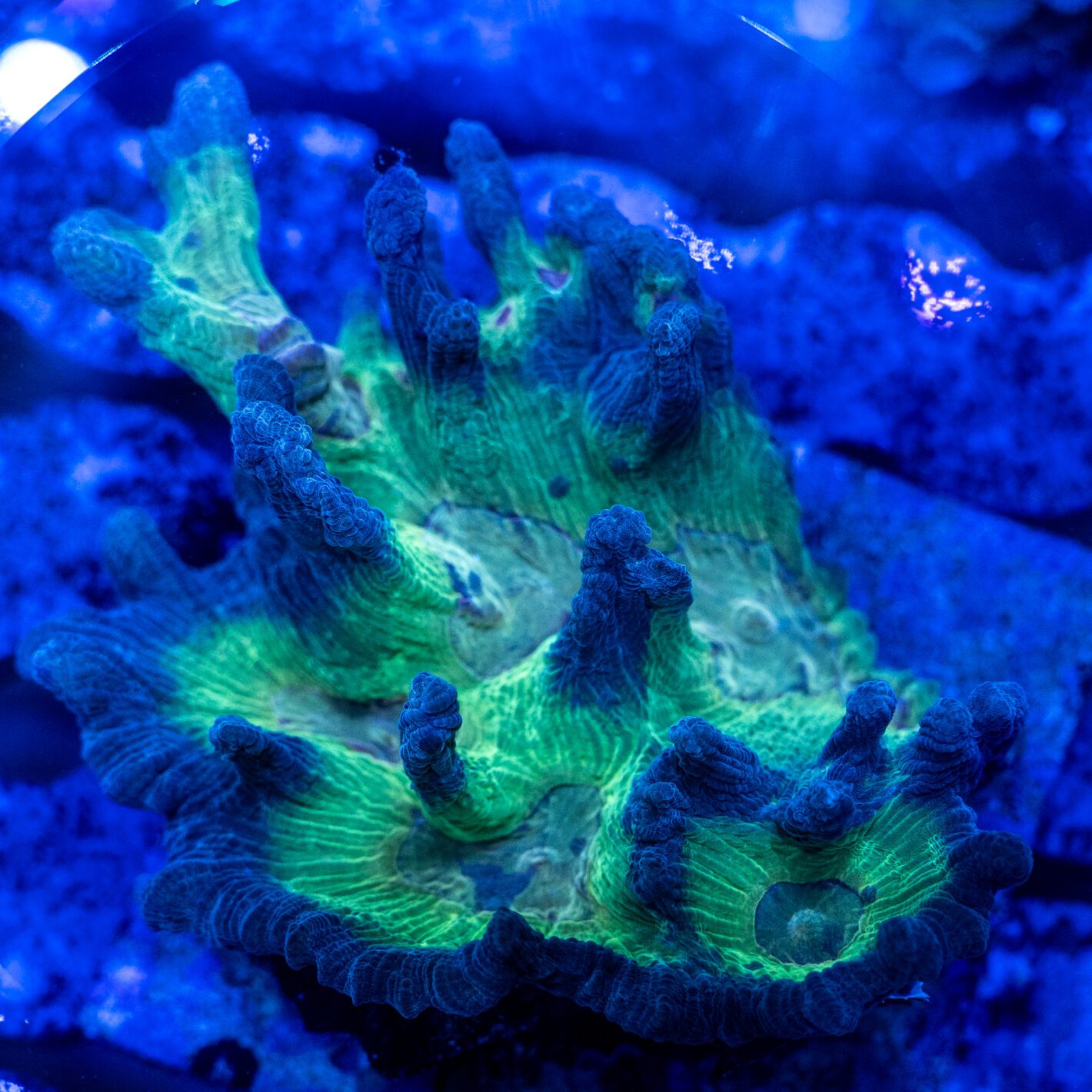
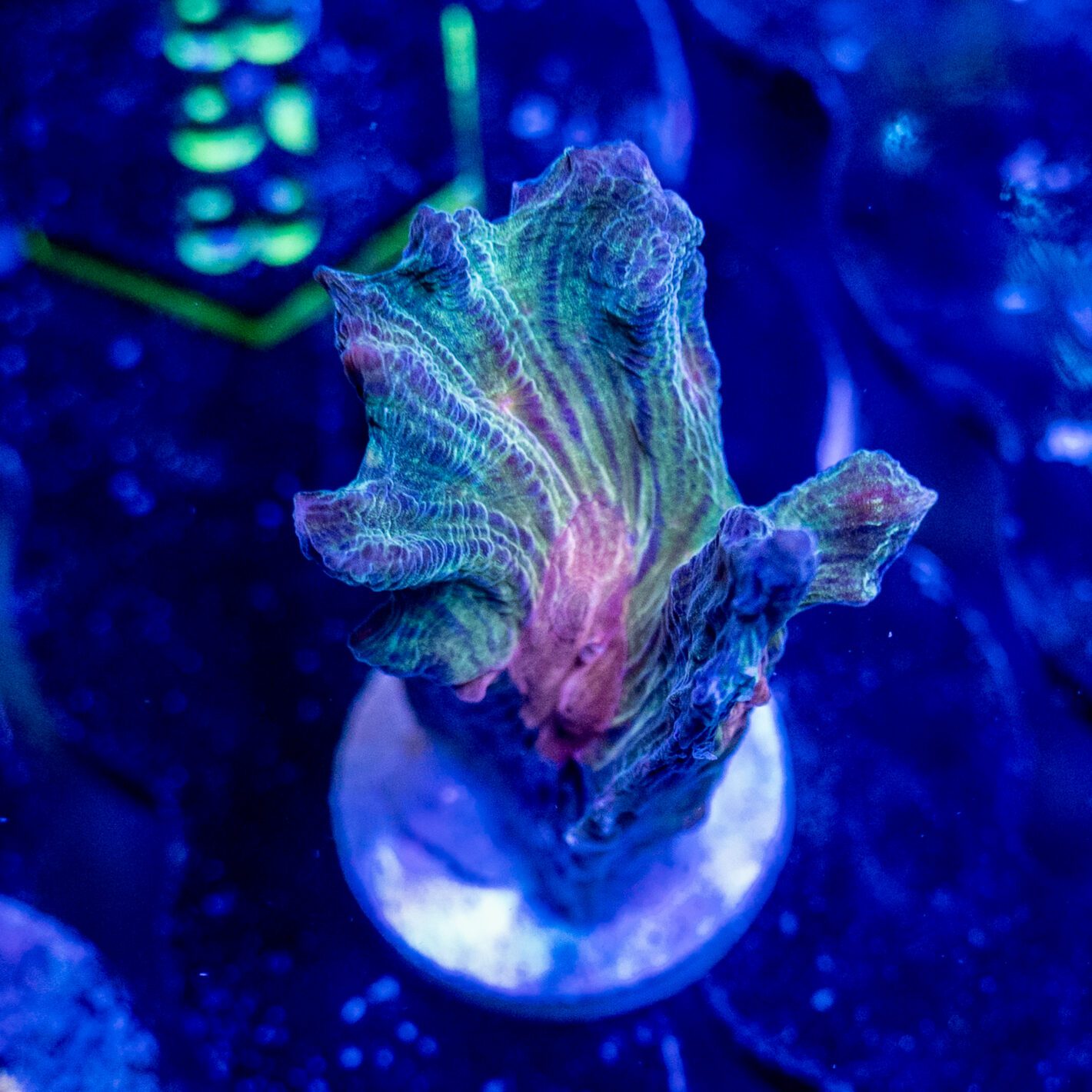
The reason we call this coral aggressive is because they have long “sweeper tentacles” that come out, generally at night from each “Mouth” and each one can be several inches long on an established Pectinia and these tentacles are capable of delivering a nasty sting to any stoney coral it can reach. Now, these tentacles can only travel with the current, so I’ve always found great success mounting a nice “chip” of Pectinia on a nearly vertical wall of rock work, where the pectinia frag can be mounted so that there are no corals “down wind” from the Pectinia, and it can grow be and healthy, casting its sweeps out only to the negative open space of the aquarium.
I will also point out we have achieved several instances of Pectinia growing into a reef in a spot where it ends up very clearly making daily contact with other stoneys and choosing not to react. Most notably my brother had an Alveopora from Northeastern AU, that grew into a Space Invader Pectinia in a smaller Cube tank, and they were essentially touching the Pectinias mouth all day and night for several months without incident.
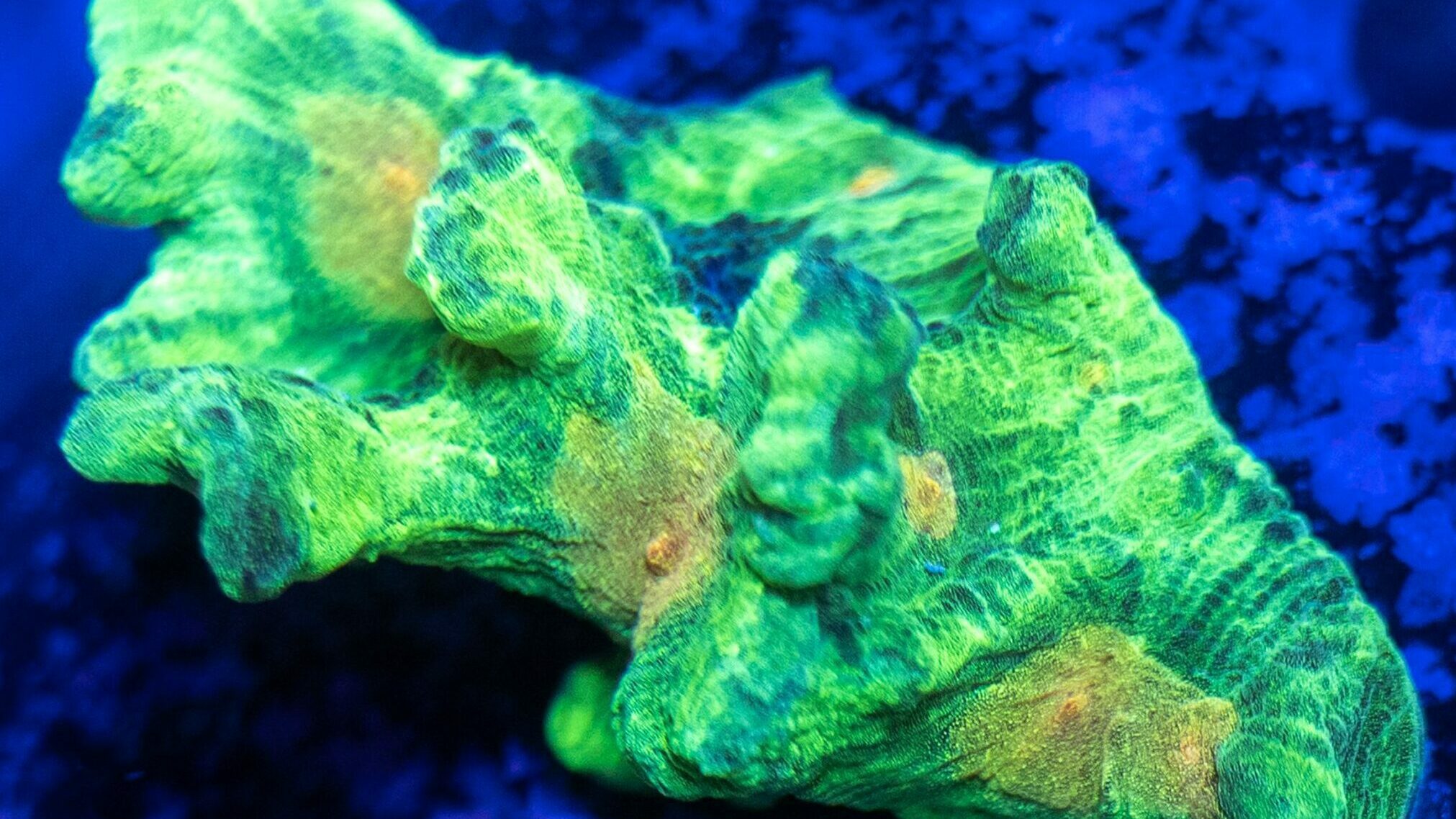
One of the Most Iconic Pectinia is of course “Space Invader.” I’ve been growing this one for nearly a decade this time around and the original piece came from an aquaculture piece with lineage dating back a long time. It is absolutely Neon Green with bright Yellow Eyes. No doubt an obvious favorite, but I’ve also really come to love the unique rainbow and tricolor varieties that we’ve been importing over the last couple years.
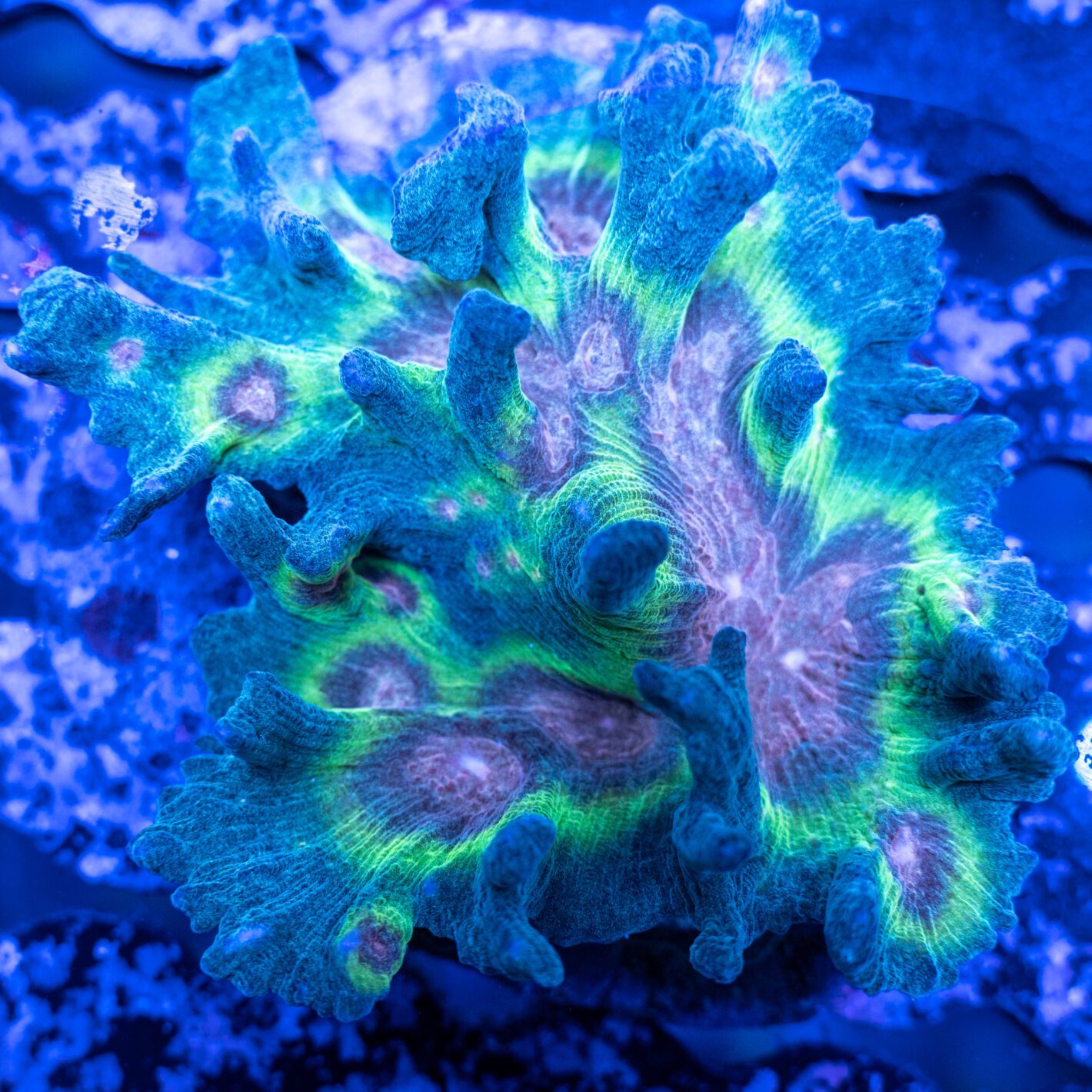
Pectinias we general keep for 3-9 months after import before even considering cutting them up, as these corals we find to be very much like favia, where the difference between fragging a super healthy colony that’s stable and has tons of excesses highly heatlhy tissue versus a new import or less established piece is very significant. A well established colony can often be cut through the Coral Saw on a Monday, all four sides even, and by Wedneday will often be completely healed over those cut edges, and survival rates of nearly 100% where as a stressed, poorly handled colony will tend to have survival rates 80% and lower, in some instances under 50% survival.
